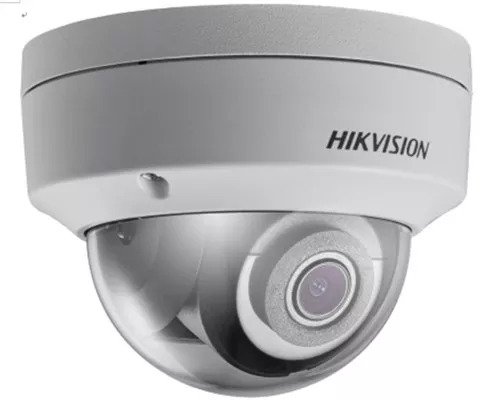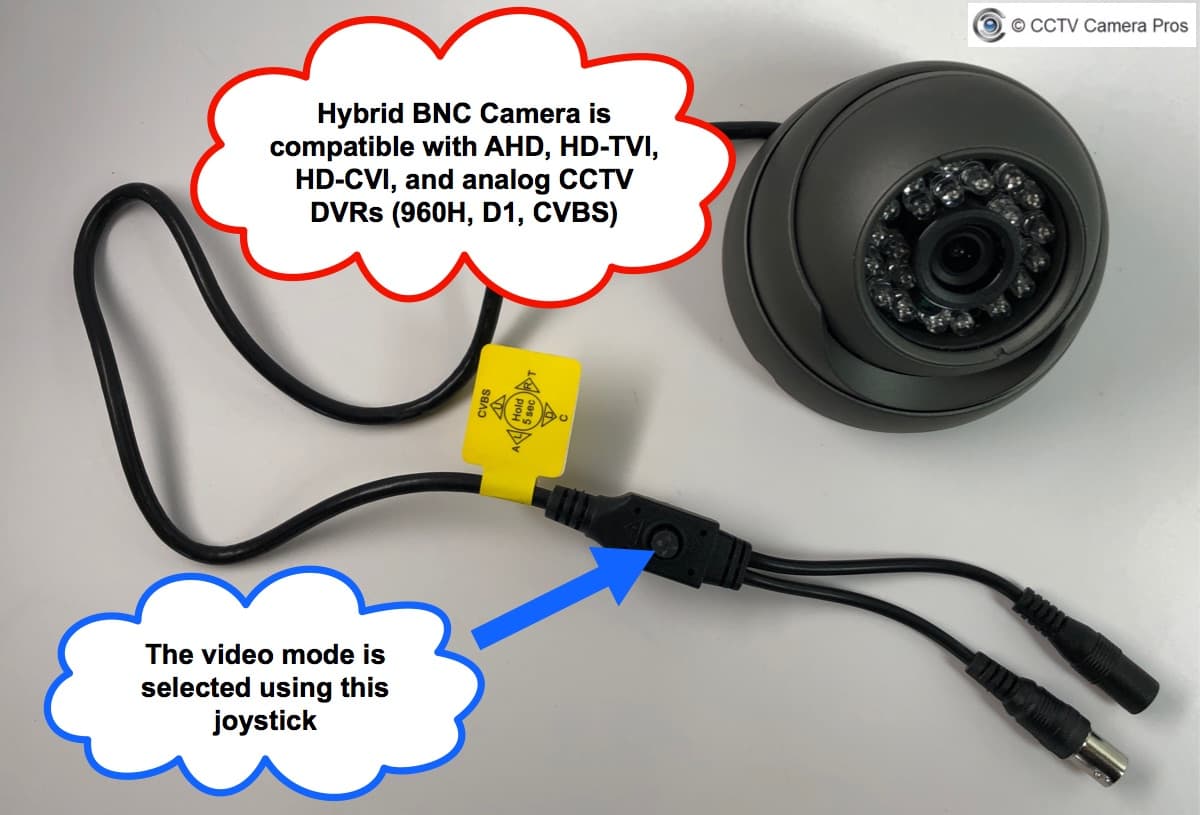To check if a CCTV camera is working, observe its status lights and try accessing its live feed. Ensure the power supply is connected and stable for optimal functionality.
In today’s security-conscious world, ensuring your CCTV system is operational is crucial. Many rely on these systems for the safety and security of their homes and businesses. A non-functioning CCTV camera can create a blind spot in your security setup, potentially leaving you vulnerable to theft or intrusion.
Understanding how to quickly verify that your cameras are working properly can save time and prevent potential security breaches. This brief guide aims to equip you with the essential steps to ensure your surveillance system is always up and running. Remember, regular maintenance and checks are key to a reliable CCTV setup.
Introduction To Cctv Camera Functionality
CCTV cameras serve as critical components in home and business security systems. They provide surveillance to keep properties safe. Understanding how these devices work helps ensure they function correctly when needed.
Purpose Of Cctv
CCTV cameras have several key purposes:
- Deterrent: They discourage potential intruders.
- Monitoring: They allow real-time observation of spaces.
- Recording: They capture events for future review.
- Evidence: They provide footage for legal cases.
Signs Of A Properly Working Cctv
Look for these indicators to confirm your CCTV is operational:
- Clear Image: The camera should display a crisp picture.
- Status Lights: Most models show active lights when on.
- Responsive Controls: PTZ cameras should move smoothly.
- Accessible Footage: Recordings must be retrievable and clear.
Visual Inspection Of The Hardware
Ensuring your CCTV cameras are operational is critical. Start with a visual inspection. This step is straightforward but vital in maintaining security.
Physical Condition Of Cameras
Begin by examining the camera’s exterior. Look for signs of wear and tear. Check for cracks, water damage, or corrosion. Ensure the camera lens is clean and unobstructed. A damaged camera may not function properly.
- Check for visible cracks or damage
- Inspect for signs of weather impact
- Ensure lenses are clean and clear
Assessing Camera Placement
Camera placement affects performance. Ensure cameras face the right direction. Check for obstructions blocking the view. Secure positioning prevents blind spots.
| Placement Check | Details |
|---|---|
| Direction | Cameras point towards key areas. |
| Obstructions | No objects block the camera’s view. |
| Stability | Cameras are mounted securely. |
Regular checks ensure cameras record as needed. Proper maintenance is essential for security.
Power Supply Verification
To ensure your CCTV camera functions well, check its power supply first. A camera without power cannot operate. Let’s dive into how you can verify the power supply to your CCTV system.
Checking Power Source
Start by locating the power source of your CCTV camera. This could be a power adapter or a direct connection to an electrical outlet. Make sure the power source is on. Check for any visible signs of damage or wear on the power cords.
Use a multimeter to test the voltage at the camera’s power input. The reading should match the camera’s required voltage. If not, your camera may not power up correctly.
Identifying Power Failures
A power failure can stop your camera from working. Look for tripped circuit breakers or blown fuses. These could cut power to the camera.
- Inspect the power outlet with a tester to ensure it’s live.
- Check for loose connections at the camera or power supply.
- Replace batteries if your camera is wireless and not plugged in.
A camera not working could simply be due to a power issue. Fixing this can get your CCTV back up.

Credit: www.precisionsecurity.com.au
Indicator Lights And Their Meanings
Indicator lights on CCTV cameras tell us if they are working right. These small, often colored lights give important clues about the camera’s status. Knowing what each light means helps keep your security system up and running smoothly.
Understanding Led Signals
LED signals on a CCTV camera are like the camera’s language. Each color and pattern has a meaning. Here are common signals:
- Steady Green: The camera is on and working well.
- Blinking Green: The camera is starting up or updating.
- Steady Red: There might be an issue. Check connections.
- Blinking Red: A serious problem is happening. It may need a reset or repair.
Troubleshooting Light Indicators
If the lights show trouble, don’t worry. Try these steps:
- Check Power Supply: Make sure the camera’s power source is good.
- Reboot Camera: Turn it off and on again to reset.
- Inspect Cables: Look for any damaged or loose cables.
- Consult Manual: The manual may have specific advice for light patterns.
If these steps don’t fix the issue, contact support for help.
Accessing The Cctv System Interface
Today, we’re diving into how to check if your CCTV camera works. A key step is accessing the CCTV system interface. This process lets you see the camera’s view and settings. Let’s break it down.
Logging Into The Cctv Network
To start, you need to log into your CCTV network. This might sound tough, but it’s just a few steps:
- Find the IP address of your DVR or NVR. It’s in the manual.
- Open a web browser. Type the IP address and press Enter.
- You’ll see a login page. Enter your username and password.
- Hit Login. Now, you’re in the system.
Navigating The User Interface
Once you’re logged in, it’s time to navigate the user interface. Here’s how:
- Look for the Camera or Live View section. Click it.
- You’ll see all connected cameras. Choose one to view.
- Check the video feed. Is it clear and smooth? Good!
- No video? Try another camera to compare.
If you see video from other cameras, the first might be off. If none work, there might be a bigger issue. Check connections or reset the system.
Image And Video Quality Assessment
Ensuring your CCTV camera’s image and video quality is crucial. High-quality visuals are essential for identifying incidents and intruders. Follow these steps to assess your camera’s performance.
Evaluating Live Feed Quality
- Check resolution: Higher means clearer images.
- Assess color accuracy: Colors should look natural.
- Inspect for blurs: Movement should be sharp, not smeared.
- Test night vision: Images must be clear in the dark.
- Observe angle coverage: Wide angles capture more area.
- Look for pixelation: Details must be discernible.
Clear visuals help identify people and objects. Bright and consistent lighting improves quality. Adjust settings if the feed is poor.
Checking Playback Functionality
Playback checks verify recorded footage quality. Follow these steps:
- Access recordings: Use your CCTV system or app.
- Play videos: Look for the same quality as live feed.
- Pause on action: Ensure clarity in paused frames.
- Seek through footage: Smooth playback is key.
- Examine timestamps: They should match real time.
| Feature | Expected Quality |
|---|---|
| Resolution | High and clear |
| Color | Accurate and true |
| Sharpness | No blur on movement |
| Lighting | Bright and even |
Ensure your CCTV’s playback matches the live feed. Consistent quality in both means a functioning camera. If issues arise, consider professional help.
Connectivity Issues And Resolutions
When a CCTV camera stops working, it’s often due to connectivity issues. Resolving these can get your security system back online. Let’s troubleshoot common network problems and enhance wireless signals to maintain robust surveillance.
Network Connection Troubleshooting
Firstly, check the basics:
- Power supply – Ensure the camera is powered.
- Cables – Look for any loose or damaged wires.
- Lights – Notice any status lights on the camera.
Next, delve into network-specific checks:
- Access the camera via its IP address.
- Use a network scanner tool to find the device.
- Check the DHCP server for an assigned IP.
For persistent issues, reset the camera to factory settings.
Solving Wireless Signal Problems
Wireless cameras rely on strong signals. Here’s how to fix signal issues:
- Router position – Move it closer to the camera.
- Interferences – Remove physical obstacles.
- Channel – Switch the Wi-Fi channel for less interference.
Upgrade to a Wi-Fi extender if problems persist.
| Issue | Quick Fix |
|---|---|
| No Signal | Reboot router and camera |
| Weak Signal | Reposition router or use Wi-Fi extender |
| Intermittent Connectivity | Check for firmware updates |
Always ensure your camera’s firmware is up-to-date for optimal performance.
Maintenance Tips For Cctv Cameras
Keeping CCTV cameras in top shape is crucial. Regular checks ensure they work when needed. Use these simple tips to maintain your CCTV system.
Regular Cleaning Routines
Clear lenses give the best video quality. Dust and spiderwebs can block camera views. Perform these steps:
- Turn off the camera.
- Use a soft, clean cloth to wipe the lens.
- Remove debris from camera casings.
- Check for water spots or smudges.
Keep cameras clean monthly for clear images.
Firmware And Software Updates
Updates fix bugs and enhance security. Follow this guide:
- Visit the camera manufacturer’s website.
- Download the latest firmware version.
- Upload the firmware to your camera.
Regular updates keep cameras secure. Check for new releases every quarter.
Professional Assistance And When To Seek Help
Professional assistance ensures your CCTV cameras function correctly. Sometimes, you need expert help. Here’s when to seek it.
Recognizing Complex Issues
Complex issues with CCTV cameras may not have easy fixes. Look out for signs like:
- Persistent error messages
- Continuous power disruptions
- Unclear video feed
- Unusual noises from the device
These signs suggest a deeper problem. Professionals can diagnose and repair them.
Contacting Support Services
When issues arise, contact support services. Here’s a guide:
| Step | Action |
|---|---|
| 1 | Check the manufacturer’s website |
| 2 | Find the support contact info |
| 3 | Prepare product details |
| 4 | Call or email the support team |
Support teams guide you or send a technician. This ensures your camera’s best performance.

Credit: videos.cctvcamerapros.com

Credit: reolink.com
Frequently Asked Questions
How To Tell If A Cctv Camera Is Operational?
Check for status lights, look at the live feed on the monitor, or use the camera’s companion app. If there’s no signal or lights, it may not be working.
Can You Test Cctv Functionality Without A Monitor?
Yes, you can use a smartphone or tablet with the appropriate app to connect to the camera and check its live feed remotely.
What Indicates A Cctv Camera Malfunction?
A malfunctioning CCTV camera may exhibit static or no video, intermittent signal loss, or unusual noises. Check for physical damage or loose connections.
Do Cctv Cameras Have Any Self-diagnostic Features?
Some advanced CCTV systems include self-diagnostic features that notify you of malfunctions or performance issues through alerts on your monitoring device.
What Maintenance Steps Ensure Cctv Camera Operation?
Regularly clean camera lenses, check for cable integrity, ensure power supply is consistent, and update the camera’s software to maintain optimal operation.
Conclusion
Ensuring your CCTV system’s functionality is paramount for security. Regular checks, prompt maintenance, and understanding indicators of malfunctions are key. Stay vigilant with these tips to keep your surveillance effective. Safeguard your peace of mind by keeping your CCTV in top working condition.




